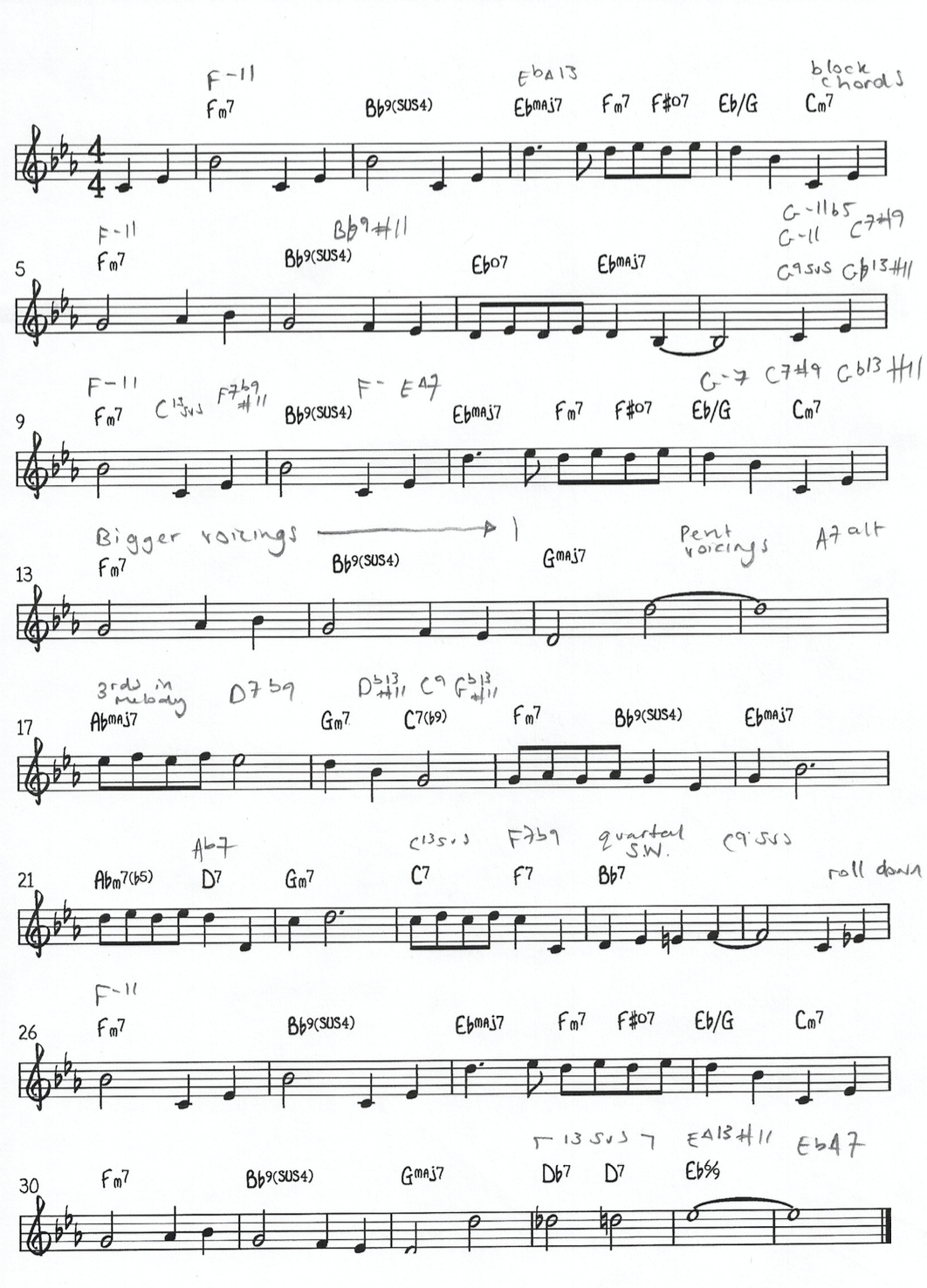Hello! One of my goals is to play from lead sheets. But now that I try it I have this question: How does one keep track of the chord extension/ alteration used for a lead sheet’s simple chord? Let’s say one plays a song one day and one sees a ii-V, Dm7-G7. But then decide to play Dm11-G7(b13). Two weeks later, you come back and see the Dm7-G7. How does one remember the extension and voicing used two weeks ago? For example, does one a) write down the extension on the lead sheet; b)play it 5 times daily until it’s memorized; c) always use the identical voicing when playing a dominant 7 chord? Thank you in advance!
Hi Armando,
If you take a look at the recording of Hayden’s live seminar on Arranging Jazz Standards, he gives some good tips on making notations on a lead sheet. He also provides a pdf of a lead sheet showing his changes.
Hey @armando 
Great question here and welcome to the community area!
Definitely check out my live seminar that @celia mentioned, here is the direct link:
I also answered a very similar question in my “Beginner Jazz Q&A Session”, scroll to 44m25s in the recording here:
Here is the download that I used to show, in my opinion, the most efficient way to notate a lead sheet so that it doesn’t constrain us to a specific voicing, but rather indicates the desired chord colour and flavour with 9ths/11ths/13ths and also the altered tones if applicable:
We also have 2 lessons on that tune that you can watch below. The above notated score is what I’m doing ‘behind the scenes’ and if you print this and watch the lessons, you should be able to see how I am using these little visual annotations/cues to inform the way that I interpret the tune:
I hope that helps. Check out all of the links referenced and let me know if I can assist further here.
Dear Hayden,
I know you must be incredibly busy but I’m grateful that you have responded so quickly and with precise information to check out. Even the info “the most efficient way to notate a lead sheet so that it doesn’t constrain us to a specific voicing, but rather indicates the desired chord colour and flavour with 9ths/11ths/13ths and also the altered tones if applicable,” answers my question. But with your examples and extra information that I will go through carefully, I’m sure I will get a deeper understanding of the concept. It gives me a chance to see it in practical use. This process has confused me and I appreciates your time, since as I said, this is one of my four goals for my playing.
I’m pretty amazed that @celia and you responded so quickly and with valuable information. I’m so impressed at the level of service and community of PianoGroove, and it’s only been a day!
Sincerely, Armando
